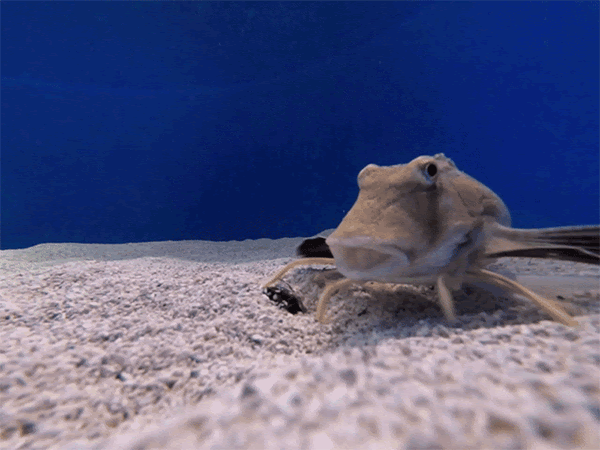
A sea robin Prionotus carolinus tasting with its legs.
We had the chance to meet a Russian scientist who firmly believes that humans can see through their skin. If this concept fascinates you, then you will be intrigued by sea robins, leggy fish that can taste with their legs.
The northern sea robin (Prionotus carolinus) uses its unique six legs not only for navigating the ocean floor but also to taste and detect buried prey.
Sea robins are truly remarkable creatures, combining the body of a fish, wings of a bird, and walking legs of a crab. Recent research published in the journal Current Biology reveals that these legs are not just for walking but serve as sensory organs to locate hidden prey while digging.

“This is a fish that grew legs using the same genes that contribute to the development of our limbs and then repurposed these legs to find prey using the same genes our tongues use to taste food—pretty wild,” says Nicholas Bellono of Harvard University.
Developmental biologist David Kingsley describes sea robins as “the weirdest, coolest fish I’d ever seen.” Bellono, Kingsley, and their team stumbled upon the sea robins during a research trip, leading to fascinating discoveries about their hunting capabilities.
The researchers found that sea robins can detect and uncover buried prey like ground-up mussel extract and single amino acids. Their legs are covered in sensory papillae, each with touch-sensitive neurons, taste receptors, and chemical sensitivity that drives their digging behavior.
Through genetic and developmental studies, the team identified a key transcription factor named tbx3a that determines the sensory leg development in sea robins. This ancient gene is essential for leg formation, sensory papillae, and digging behavior.
By studying these evolutionary adaptations, the researchers aim to broaden our understanding of complex traits and their evolution in wild organisms like sea robins.
Comments






